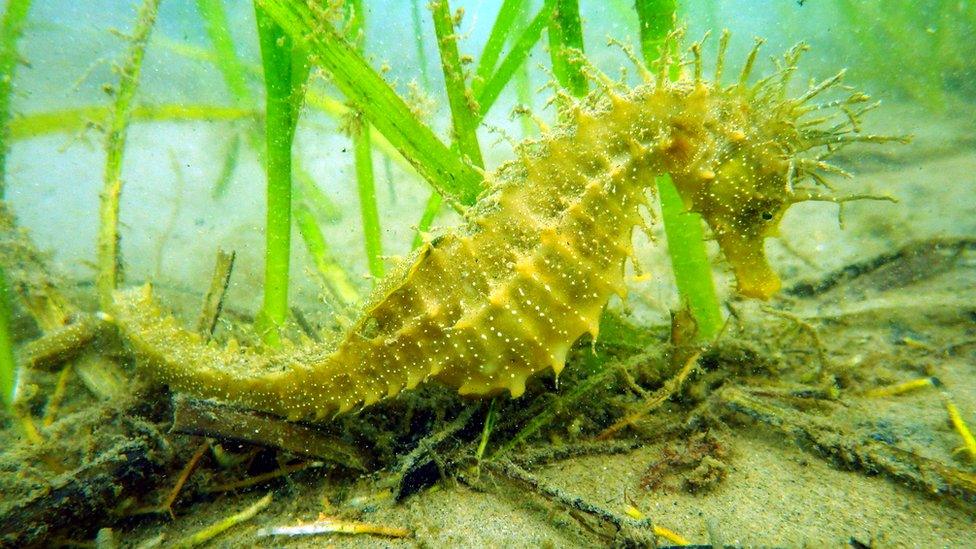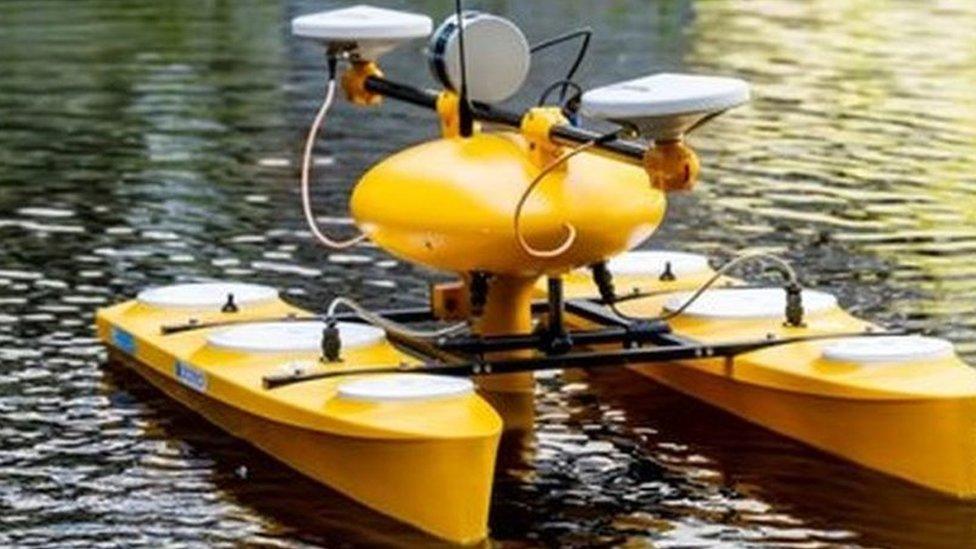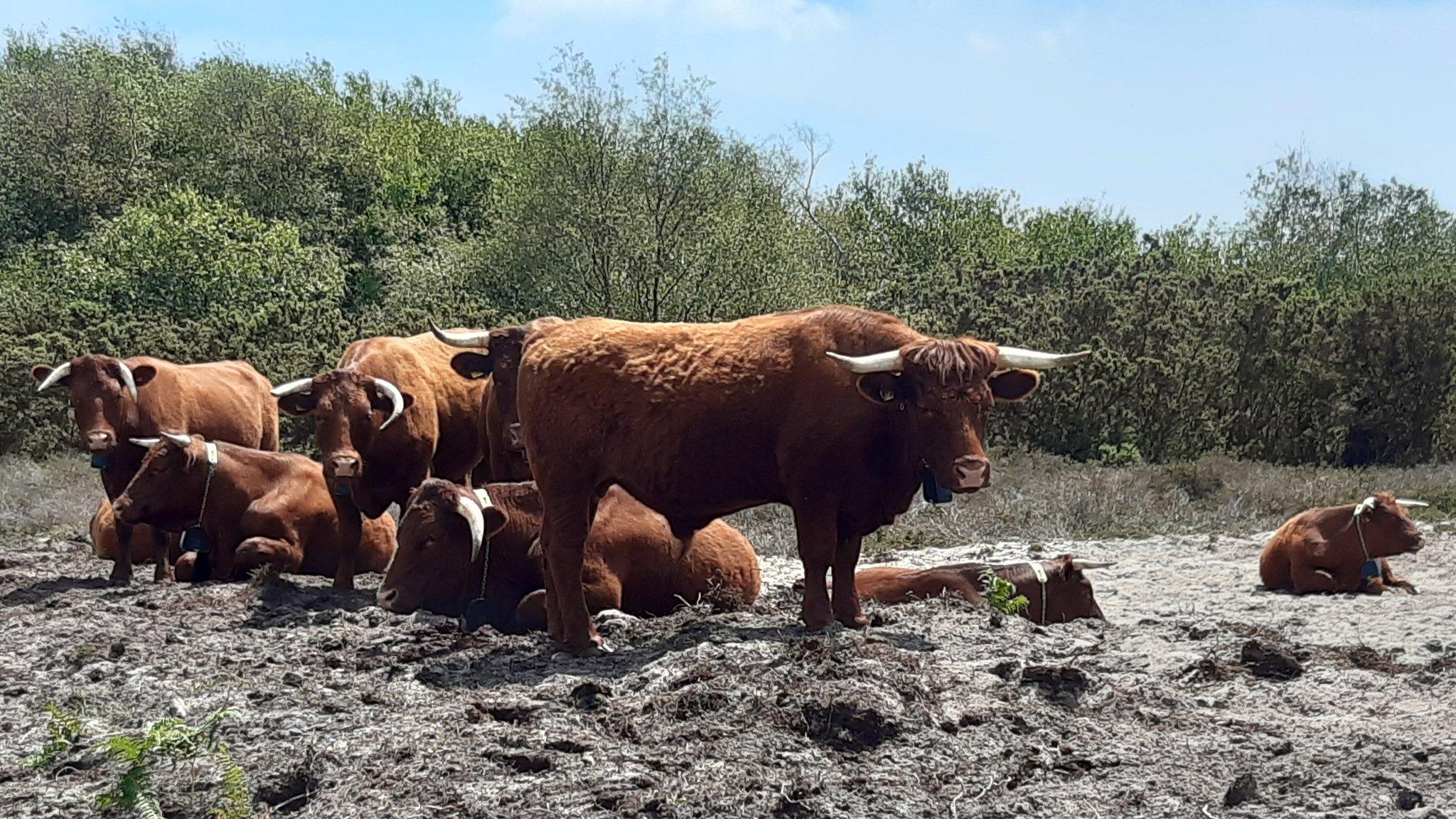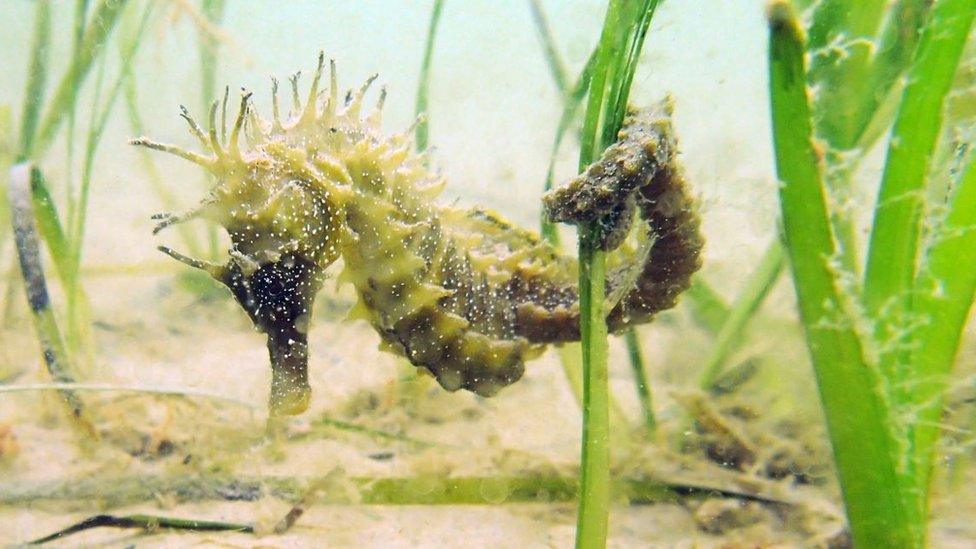Studland Bay no-anchor zone extended to protect seabed
- Published

Dropping anchors can damage seagrass meadows that are an essential breeding ground for the spiny seahorse
A no-anchor zone for pleasure craft at a beauty spot has been extended in a bid to save seagrass habitats on the seabed, despite concerns by some recreational sailors.
The scheme at Studland in Dorset, which was set up in December, has been extended to an area off South Beach.
Conservationists who installed alternative "eco-moorings" welcomed the move.
The Royal Yachting Association had called for the extension to be delayed.
The Voluntary No-anchor Zone (VNAZ) was introduced to stop the dropping of anchors, which can damage the seagrass meadows, an essential breeding ground for the spiny seahorse.
The Marine Management Organisation (MMO) said the extension was part of a strategy to ensure "marine activities in the area continue in a sustainable way".

Seagrass meadows are scoured when traditional anchors are used
Ten eco-moorings, costing £2,000 each, have been placed at the site by the Seahorse Trust charity and national marina group Boatfolk, with another 12 planned for later this year.
'Amazing tool'
They use a helical screw anchor, which is driven into the seabed and attached to the mooring buoy via an elastic band.
Its flexibility means it does not scour the seagrass like a conventional anchor.
Neil Garrick-Maidment, from the trust, said it was "vital" the area - designated as a Marine Conservation Zone (MCZ) in 2019 - was used "responsibly and sustainably".
"Seagrass beds are an amazing tool against climate change and we need to do all we can to protect them," he said.
The Royal Yachting Association's sustainability manager, Phil Horton, said the VNAZ had been "working very well", but raised concerns that it had not been publicised enough to sailors and there were not yet enough eco-moorings to meet demand during the height of the summer.
"There is a need to keep the boaters on board. We are very supportive - we just want to see the resources and alternative options in place," he added.
The MMO said it was carrying out "water engagement" in Studland Bay to raise awareness of the zone among boat owners.

Researchers are using an autonomous surface vehicle to survey the seagrass meadows at Studland
A study by the University of Southampton to assess the "extent and health" of the seagrass beds at Studland has also begun.
Researchers are using camera-equipped robotic submersibles and autonomous boats to map the seagrass and monitor its recovery from past anchor damage.
"Promoting the health and preventing damage to seagrass meadows is an ecologically friendly, nature-based solution for coastal management," a university statement said.

Seagrass
Across the globe, there are more than 70 species of seagrass, growing in shallow and sheltered coastal areas
It absorbs 10% of the ocean's carbon each year and captures carbon up to 35 times faster than tropical rainforests
Seagrass builds its leaves and roots using carbon, which it extracts from water through the process of photosynthesis, and it holds on to it even after it dies off
Dead plant material decomposes slowly on the ocean floor, and this means that the carbon stored within is eventually buried under the seabed
Seagrass is critically endangered and appears on the EU Red List of habitats
Source: BBC Earth, external

Follow BBC South on Facebook, external, Twitter, external, or Instagram, external. Send your story ideas to south.newsonline@bbc.co.uk, external.
- Published21 July 2021

- Published2 June 2020
